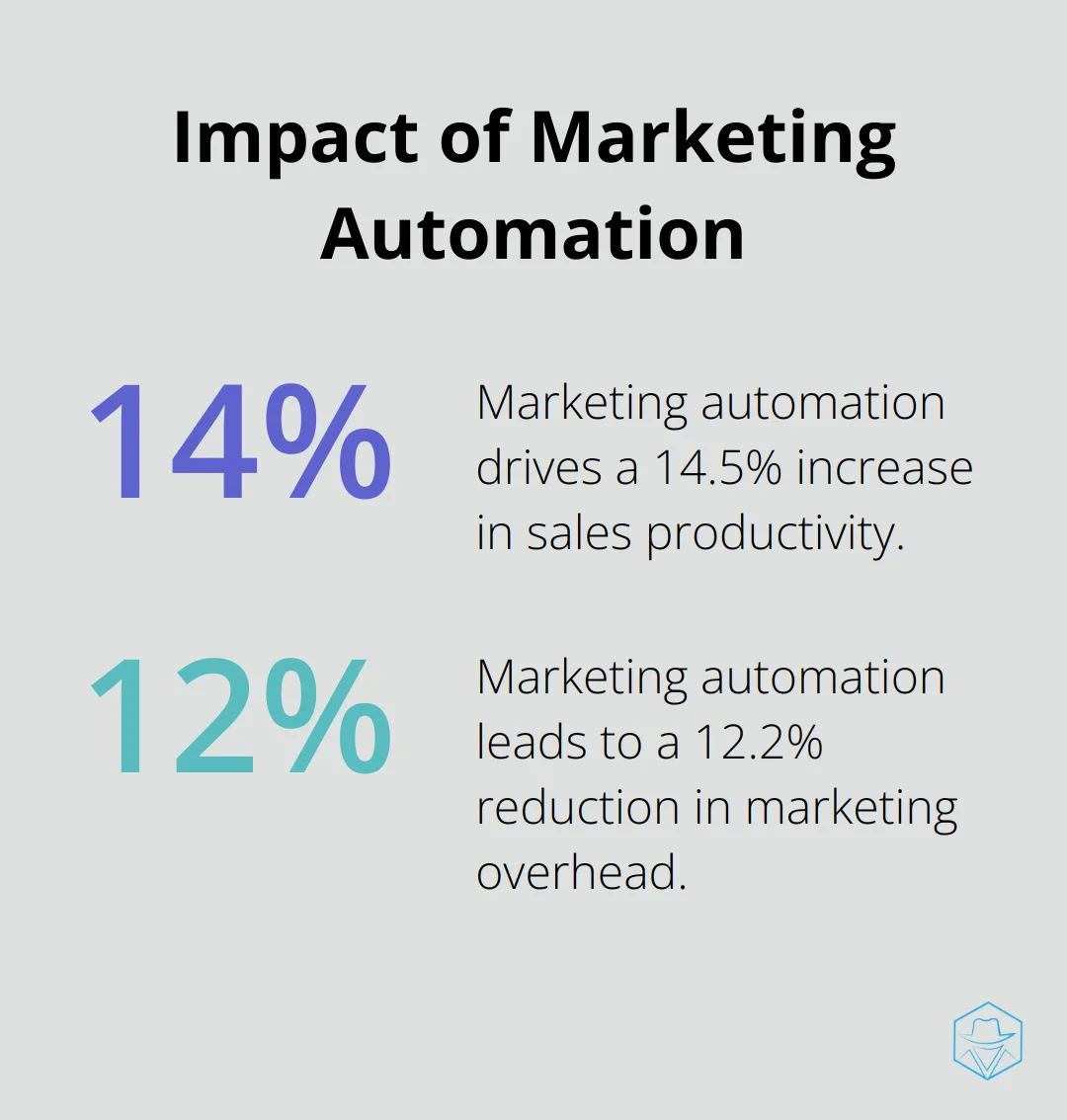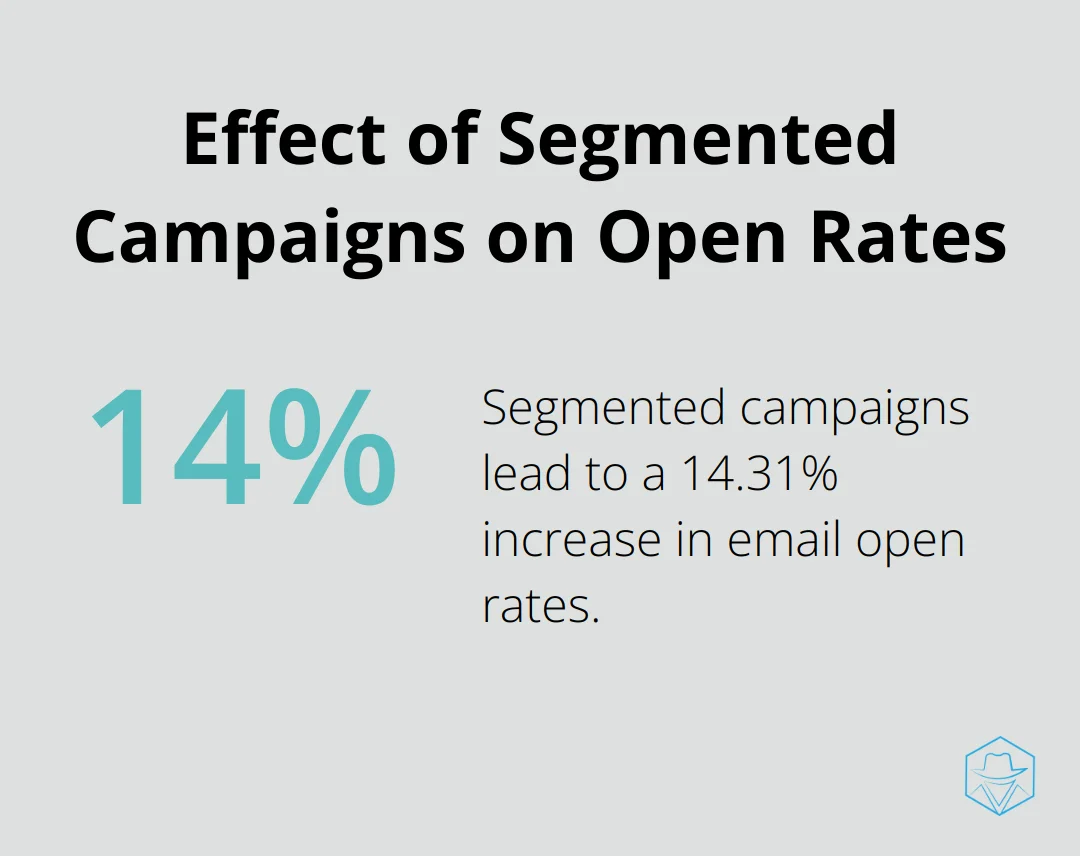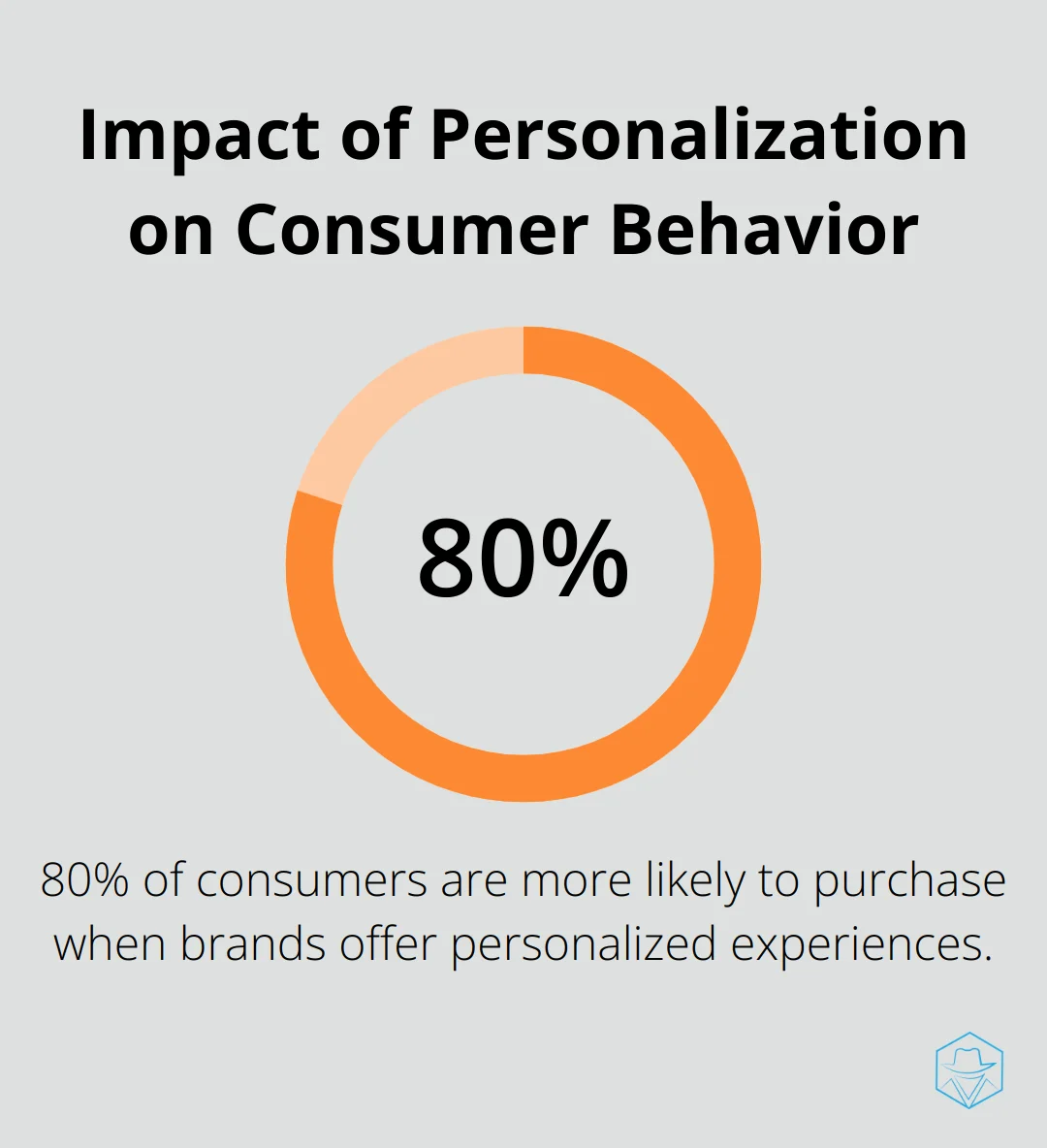How to Implement Marketing Automation Successfully

At Drop Cowboy, we’ve seen firsthand how marketing automation can transform businesses. It’s a game-changer for companies looking to streamline their marketing efforts and boost their bottom line.
In this post, we’ll guide you through the process of implementing marketing automation successfully. We’ll cover everything from understanding the basics to mastering advanced techniques, including insights on Omnisend ecommerce marketing automation.
What Is Marketing Automation?
Marketing automation transforms how businesses interact with customers. It uses software to automate repetitive marketing tasks, which allows teams to focus on strategic activities.
The Building Blocks of Marketing Automation
Marketing automation systems typically include:
- Email marketing
- Social media posting
- Ad campaigns
- Lead generation
These components create a seamless marketing experience. For example, when a potential customer completes a website form, it can trigger a series of automated emails tailored to their interests.
Benefits for Businesses of All Sizes
Marketing automation offers substantial benefits, regardless of company size. Small businesses can compete with larger corporations, while larger companies can scale operations more efficiently.
A study by Nucleus Research found that marketing automation drives a 14.5% increase in sales productivity and a 12.2% reduction in marketing overhead. These numbers highlight the potential for significant ROI (Return on Investment).

Debunking Common Myths
Many people believe marketing automation is impersonal or only suitable for large corporations. This isn’t true. Modern marketing automation platforms offer sophisticated personalization options that can make communications feel more human, not less.
Another misconception is that marketing automation is a “set-it-and-forget-it” solution. In reality, it requires ongoing optimization and strategy adjustments. The most successful companies continuously refine their automated campaigns based on performance data.
Some worry that marketing automation will replace human marketers. Instead, it enhances their capabilities, allowing them to focus on high-level strategy and creative tasks while the software handles repetitive processes.
The Role of AI in Marketing Automation
Artificial Intelligence (AI) plays an increasingly important role in marketing automation. AI-powered tools can analyze vast amounts of data to predict customer behavior, personalize content, and optimize campaign timing. This leads to more effective marketing efforts and improved ROI.
Marketing automation isn’t just a trend-it’s a fundamental shift in how businesses approach marketing. The next section will outline key steps for successful implementation, helping you harness the power of this technology for your business.
How to Implement Marketing Automation
Set Clear, Measurable Goals
The first step in implementing marketing automation is to define specific, measurable objectives. Do you want to increase lead generation by 20%? Or boost customer retention rates by 15%? Your goals should be SMART (Specific, Measurable, Achievable, Relevant, and Time-bound). This clarity will guide your strategy and help you measure success.
Choose the Right Platform
Selecting the appropriate marketing automation platform is essential. Consider factors like your budget, team size, technical expertise, and specific feature requirements. While many options exist, platforms that combine multiple communication channels (such as ringless voicemail, SMS, and AI-powered voice cloning) can offer comprehensive solutions for businesses looking to boost engagement and streamline campaigns.
Create a Detailed Implementation Plan
Develop a step-by-step plan for rolling out your marketing automation. This should include timelines, resource allocation, and specific tasks for each team member. Factor in time for training your team on the new system. A well-structured plan can make the difference between a smooth implementation and a chaotic one.
Build and Segment Your Contact List
A robust, well-organized contact list forms the foundation of effective marketing automation. Start by consolidating your existing contacts from various sources. Then, segment your list based on relevant criteria such as demographics, behavior, or engagement level. A study by MailChimp found that segmented campaigns can lead to a 14.31% increase in open rates compared to non-segmented campaigns.

Develop Targeted Content
Create compelling, personalized content for each segment of your audience. This could include email templates, landing pages, social media posts, or even personalized voicemail messages (if your chosen platform offers such capabilities). The more relevant your content is to each segment, the higher your engagement rates will be.
The next step in your marketing automation journey involves mastering best practices to maximize the effectiveness of your campaigns. Let’s explore how you can fine-tune your automation strategy for optimal results.
Mastering Marketing Automation Techniques
Marketing automation transforms businesses, but its success depends on proper implementation and maintenance. We’ll explore key techniques to elevate your marketing automation strategy.
Personalize Your Approach
Personalization extends beyond using a customer’s name in an email. It involves tailoring your entire communication strategy to individual preferences and behaviors. A study by Epsilon found that 80% of consumers are more likely to purchase when brands offer personalized experiences.

Use your customer data to create detailed segments. Then, craft unique content for each segment. For example, a clothing store campaign might send different messages to customers interested in formal wear versus those who prefer casual attire.
Extend personalization across all channels, including SMS, social media, and ringless voicemail. Some platforms allow you to create personalized voice messages using AI voice cloning technology, adding a unique touch to your campaigns.
Align Sales and Marketing Teams
Effective marketing automation requires close collaboration between sales and marketing teams. When these departments work in silos, it leads to disjointed customer experiences and missed opportunities.
Schedule regular meetings between sales and marketing teams to align goals and strategies. Use shared metrics to measure success, such as qualified leads generated or conversion rates. This alignment ensures that your automated campaigns generate the right kind of leads for your sales team.
Consider using a unified platform that gives both teams visibility into customer interactions. This shared view helps create a seamless handoff from marketing to sales, improving the overall customer journey.
Optimize Continuously
Marketing automation requires ongoing analysis and optimization to maintain its effectiveness. Review your campaign performance metrics regularly and make data-driven decisions to improve results.
A/B testing is a powerful tool for optimization. Test different elements of your campaigns, such as subject lines, call-to-action buttons, or send times. Even small improvements can lead to significant results over time. A study by Campaign Monitor found that A/B testing email campaigns can increase conversion rates by up to 49%.
Keep your automation workflows up-to-date. As your business evolves, your workflows should too. Review and update your triggers, actions, and content regularly to ensure they align with your current business goals and customer needs.
Leverage Multi-Channel Strategies
Effective marketing automation doesn’t rely on a single channel. Try to integrate multiple touchpoints (e.g., email, SMS, social media) into your campaigns. This multi-channel approach allows you to reach customers where they’re most active and responsive.
For instance, you might start with an email campaign, follow up with an SMS reminder, and then use retargeting ads on social media. This coordinated approach can significantly boost engagement and conversion rates.
Monitor and Maintain Data Quality
The success of your marketing automation efforts hinges on the quality of your data. Implement regular data cleaning processes to remove outdated or incorrect information. This maintenance ensures that your automated campaigns target the right people with accurate information.
Consider using data enrichment tools to fill in gaps in your customer profiles. The more complete and accurate your data, the more effective your personalization and targeting efforts will be.
Final Thoughts
Marketing automation transforms businesses by streamlining efforts and driving growth. Companies enhance customer engagement, boost productivity, and achieve better ROI on marketing investments through automation. We at Drop Cowboy offer a comprehensive solution that combines ringless voicemail, SMS, and AI-powered voice cloning to create highly personalized campaigns across multiple channels.
The e-commerce landscape evolves rapidly, making tools like Omnisend ecommerce marketing automation increasingly valuable for online retailers. These platforms address unique e-commerce marketing challenges, helping businesses create seamless customer journeys and drive sales. Specialized features enable retailers to craft targeted campaigns that resonate with their audience and boost conversion rates.
The time to embrace marketing automation is now. Drop Cowboy provides powerful tools to take your marketing efforts to new heights. Our platform enables you to create meaningful connections with customers, streamline processes, and stay ahead in today’s competitive business landscape.
blog-dropcowboy-com
Related posts

March 31, 2025
Zoho CRM vs HubSpot: Comparing Features and Benefits
Compare Zoho CRM vs HubSpot to make the best choice for your business. Explore features, benefits, and insights in our detailed analysis today!

April 17, 2025
Essential Shopify Apps for Successful Dropshipping
Discover the best Shopify apps for dropshipping to boost efficiency, streamline operations, and enhance customer experience effortlessly.

July 20, 2025
Is Salesforce CCaaS Right for Your Contact Center?
Explore if Salesforce CCaaS suits your contact center needs by examining features, benefits, and industry trends to enhance your customer interactions.

June 16, 2025
Discover How to Leave Voicemail Without Calling Anyone
According to Industrial Sales Leads, approximately 80% of sales calls go to voicemail. This common scenario can be frustrating when you need to leave an important message without engaging in a live conversation. Learning how to leave voicemail without calling can streamline your communication, ensuring your message is delivered without the need for direct interaction. Today, we’re taking a […]

May 6, 2025
How to Set Up Marketing Automation for Success
Discover how to set up marketing automation for success with practical tips and real-world stats to boost efficiency and drive better results.

April 17, 2025
Which SEO Apps Work Best for Shopify Stores?
Discover the best SEO apps for Shopify stores and boost your store’s visibility with top tools and strategies. Optimize your online presence now.